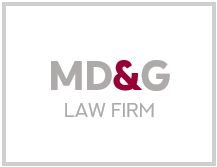Registration Statements
SEC Adopts Final Climate-Related Disclosure Rules
MOHAMED RUNGU
JUDY DEWITT - NEW YORK
The Securities and Exchange Commission (SEC) is adopting amendments to its rules under the Securities Act of 1933 and Securities Exchange Act of 1934 that will require registrants to provide certain climate-related information in their registration statements and annual reports.
The final rules will require information about a registrant’s climate-related risks that have materially impacted, or are reasonably likely to have a material impact on, its business strategy, results of operations, or financial condition. In addition, under the final rules, certain disclosures related to severe weather events and other natural conditions will be required in a registrant’s audited financial statements.
The SEC adopted final rules requiring registrants to disclose certain climate-related information in registration statements and annual reports. The final rules represent a historic expansion of US securities disclosure regulation, and will likely significantly increase the complexity of public company reporting for many US registrants in the future.
In summary, the final rules will require disclosure regarding:
Registrants will need to disclose any oversight by the board of directors of climate-related risks and any role by management in assessing and managing the registrant’s material climate-related risks.
Registrants will need to disclose any climate-related risks identified by the registrant that have had or are reasonably likely to have a material impact on the registrant, including on its strategy, results of operations, or financial condition in the short and long term. Registrants will also need to disclose the actual and potential material impacts of any identified climate-related risks on the registrant’s strategy, business model, and outlook, including, as applicable, any material impacts on a non-exclusive list of items enumerated in the rules.
If a registrant is a large accelerated filer or an accelerated filer that is not otherwise exempted, and its emissions metrics are material, that registrant will be required to disclose those GHG emissions and produce an attestation report in respect of those emissions subject to phased-in compliance dates. With respect to registrants who are not otherwise required to disclose their GHG emissions or produce a GHG emissions attestation report, those registrants will be required to disclose certain information under the rules if they voluntarily disclose their GHG emissions in an SEC filing and voluntarily subject those disclosures to third-party assurance.
If, as part of its strategy, a registrant has undertaken activities to mitigate or adapt to a material climate-related risk, the registrant will need to disclose a quantitative and qualitative description of material expenditures incurred and material impacts on financial estimates and assumptions that, in management’s assessment, directly result from such mitigation or adaptation activities.
Registrants will be required to disclose the capitalized costs, expenditures expensed, charges, and losses incurred as a result of severe weather events and other natural conditions, such as hurricanes, tornadoes, flooding, drought, wildfires, extreme temperatures, and sea level rise, subject to applicable 1% and de minimis disclosure thresholds, and will also be required to disclose the capitalized costs, expenditures expensed, and losses related to carbon offsets and renewable energy credits or certificates (RECs) if used as a material component of a registrant’s plans to achieve its disclosed climate-related targets or goals.
If a registrant has set a climate-related target or goal that has materially affected or is reasonably likely to materially affect the registrant’s business, results of operations, or financial condition, the registrant will have to make certain disclosures about such target or goal, including disclosures regarding material expenditures and material impacts on financial estimates and assumptions as a direct result of the target or goal or actions taken to make progress toward meeting such target or goal.
If a registrant uses scenario analysis and, in doing so, determines that a climate-related risk is reasonably likely to have a material impact on its business, results of operations, or financial condition, the rules require certain disclosures regarding such use of scenario analysis. In addition, if a registrant’s use of an internal carbon price is material to how it evaluates and manages a material climate-related risk, that registrant will be required to make certain disclosures about the internal carbon price.
In addition, while the release for the proposed rules discussed the possibility of allowing foreign private issuers or other companies to provide information based on non-US standards in place of SEC requirements, the final rules provide no such accommodation. The final rules also provide that information relating to transition plans, scenario analysis, the use of an internal carbon price, and targets and goals, except for historical facts, is considered a forward-looking statement for the purposes of the Private Securities Litigation Reform Act and the federal securities laws.
The final rules generally require that registrants (both domestic and foreign private issuers) file the climate-related disclosures in their registration statements and Exchange Act annual reports.
















